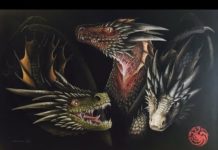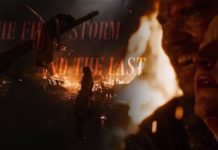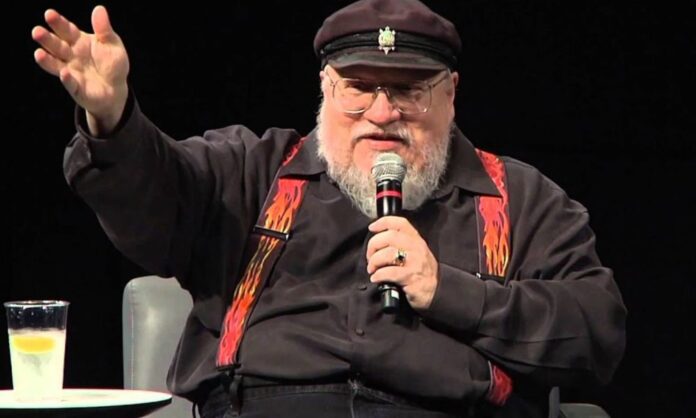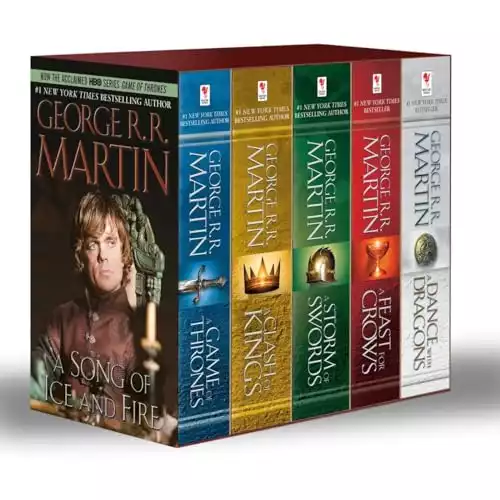Both A Song of Ice and Fire and Game of Thrones have faced significant criticism over the years regarding their portrayal of social and political issues. The complex themes of power, race, and gender in these stories have led to debates about their messages and implications. In a 2014 interview, George R.R. Martin responded to some of these critiques, offering his perspective on the creative choices made and explaining the contexts behind them. Martin also addressed misunderstandings surrounding his work and the way it has been adapted for the screen.
Read More: Game of Thrones’ Maisie Williams opens up about Gender Fluidity
Race and slavery in Game of Thrones and A Song of Ice and Fire
In a conversation during an event hosted by The Brown University Library in 2014, Martin was asked about the political and social implications in his books and the TV series. You can watch the full video here:
The interviewer pointed out critiques regarding racial tropes, particularly the “white savior” narrative, and asked for Martin’s thoughts on whether these critiques were justified. Martin took the opportunity to clarify the differences between the books and the TV show, particularly when it came to the depiction of slavery in Slaver’s Bay. The “white savior” accusation, he explained, was a misunderstanding of the intended portrayal:
“Well, that question covers a lot of territory, so let me try to break it down into component parts. First of all, you have to separate the books from the television series. They’re two different things, and sometimes it’s very clear—like in the case of the ‘white savior’ business with the scene where Daenerys is hailed by the slaves she’s just freed in the city of Yunkai. That scene is drawn largely from the books, but in the book’s context, the slavery in Slaver’s Bay (Yunkai, Astapor, and Meereen) is not racially based. It’s not like American slavery, which was strictly race-based. It’s modeled much more on the slavery of the ancient Near East, the Romans, and the Greeks, where slaves could be of any race.
Martin further explained that while slavery in the world of A Song of Ice and Fire was not racially driven, the issue arose during the filming of the TV show. Scenes filmed in Morocco, for instance, used local extras, which led some viewers to assume that the slaves were of a particular race.
“For example, the Greeks enslaved each other—if Thebes defeated Athens in a war, a bunch of Athenians would become slaves in Thebes, and vice versa. The Romans conquered people of various colors in Africa, Germany, and Gaul, and made slaves of them all. That’s certainly what I depict in the books, and I think that’s what is meant to be depicted in the TV show. But with the practicalities of running a TV show, those scenes were filmed in Morocco, and the people you see are extras who were paid thirty dollars a day or something like that to perform in the background when you film.”
The limitations of production logistics, Martin explained, played a large role in the visual choices made on-screen.
“You put out a call for extras, and people show up. When filming in Morocco, Moroccans show up. So I don’t know what the implication was. Maybe people who hadn’t read the books assumed that the freed slaves were brown or black, but that wasn’t intended to be the case. On the other hand, flying in people from Ireland to Morocco just to stand in the crowd would have been very cost prohibitive. These are the practicalities of television production that some critics didn’t take into account.”
The “sexposition” debate and the portrayal of sexual violence
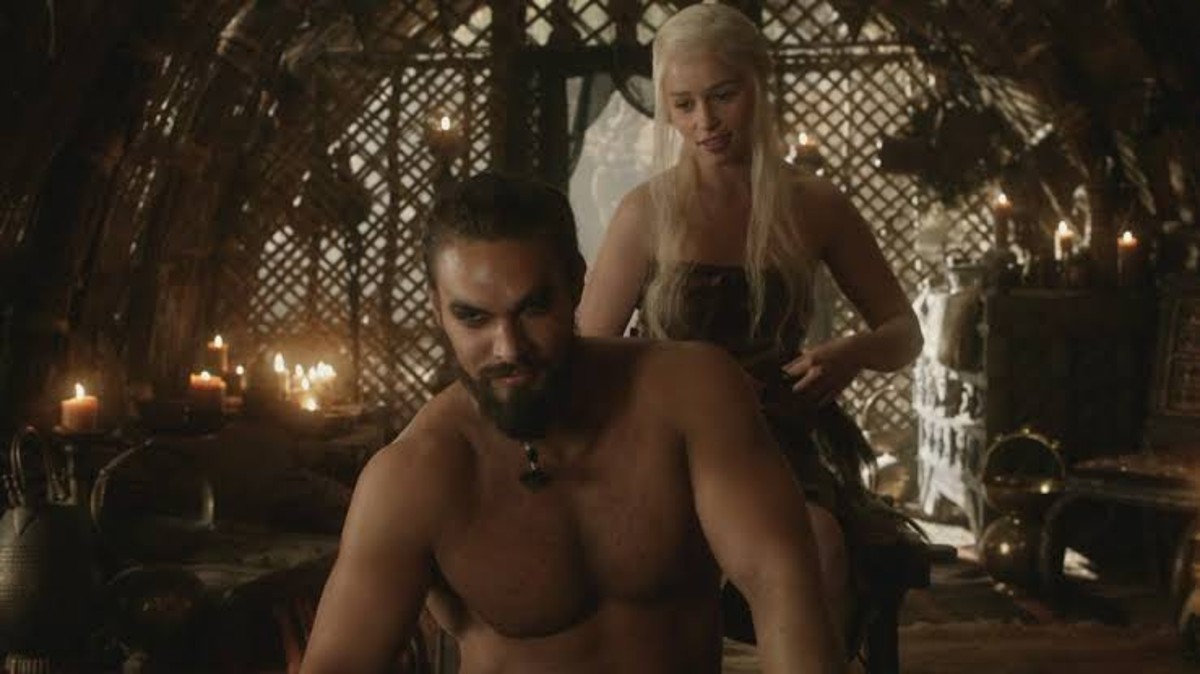
Credits: HBO
The issue of “sexposition”—a term coined to describe scenes that use sex to add interest to otherwise mundane dialogue—also came up in the interview. The interviewer pointed out that some critics felt that sexual scenes in Game of Thrones served as nothing more than titillation and were a detriment to the narrative. Martin acknowledged that, while some critiques were valid, the term “sexposition” had been misused in relation to all sexual content in the show. He clarified that the term originally referred to a specific scene, not a general trend across the series:
“Now let me go to another part of that question, the “sexposition” issue. That was a very cool coinage, which was coined by I think it was Miles McNutt, referring to a particular scene. I think it was probably justified for that particular scene—Littlefinger is giving a long speech in the brothel, and meanwhile, a couple of girls are getting it on in the background. It was parodied on Saturday Night Live, and all that. But I do think that, like many of these tropes that have come forward, it’s been vastly misused. People don’t seem to understand the scene and have started applying it to any scene that has sex. I don’t think sexuality is “sexposition.” The term was meant for that one particular thing where they’re trying to put something visually interesting behind the scene while someone was delivering a long nugget of backstory.”
Martin emphasized that sex was not merely used for titillation but served a variety of narrative purposes in the broader context of the series.
Read More: Jacob Anderson reveals Grey Worm and Missandei were originally supposed to be siblings
Subverting the traditional heroism paradigm in fantasy
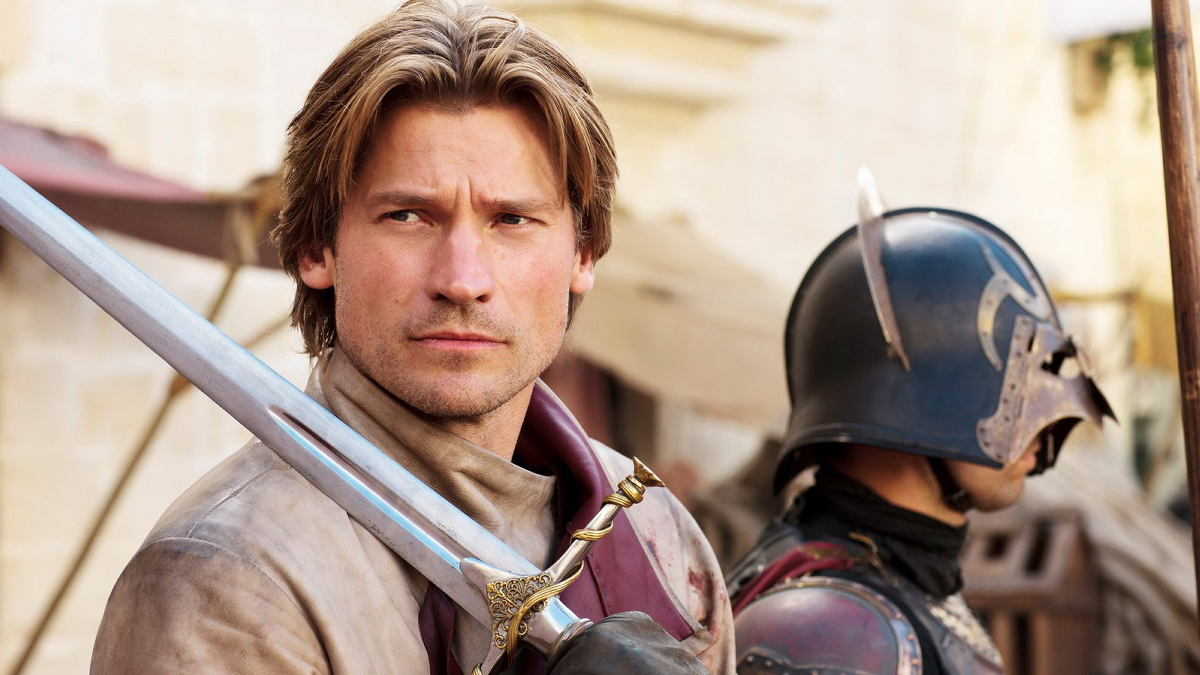
Credits: HBO
The discussion then turned to how Martin’s work subverts the traditional notions of heroism in fantasy. While many fantasy stories are defined by the clear-cut divide between heroes and villains, Martin’s characters defy these norms, often presenting complex figures who evolve over time. The interviewer asked whether Martin had set out to change the way heroes were depicted in fantasy or if these characters had developed organically. Martin explained that his interest in creating complex characters had always come from his love for intricate storytelling:
“I think it’s a bit of both. I’ve always been attracted to great characters, and I find them more interesting than heroes who are just going around being heroic all the time. When Jaime loses his hand, he becomes a more sympathetic character and seeks redemption. That leads to a lot of personal anguish, growth, and struggle—all of which makes great material for drama.”
Martin reflected on his early love of comic books, particularly Marvel comics, which featured more complicated characters than the traditional “good vs evil” narrative. He credited Stan Lee’s influence for making Marvel’s characters more engaging by adding internal conflict and personal growth, something Martin tried to mirror in his own work. He also touched on the theme of redemption, which plays a significant role in many of his characters’ arcs:
“I grew up as a comic book fan, and one of my early influences was Stan Lee. One of the things that really made Marvel stand out was that, unlike DC Comics, their characters weren’t just predictable. With Marvel, you had characters like the Fantastic Four, where one of them was a monster and didn’t like being a monster. The team fought within themselves, which was something you didn’t see in DC Comics. That internal conflict made Marvel comics much more interesting.”
Martin’s approach to complex characters, internal struggles, and redemption has reshaped how we view heroes and villains in modern fantasy, and these ideas continue to resonate with audiences around the world.
Read More: Author Larry Correia takes a dig at George R.R. Martin in his new book Heart of the Mountain


















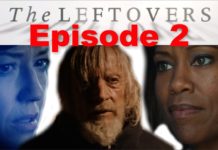

![[Book Review] The Blade Itself (The First Law Trilogy) by Joe Abercrombie](https://bendthekneegot.com/wp-content/uploads/2018/01/1516047103_maxresdefault-218x150.jpg)


